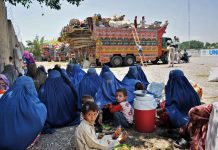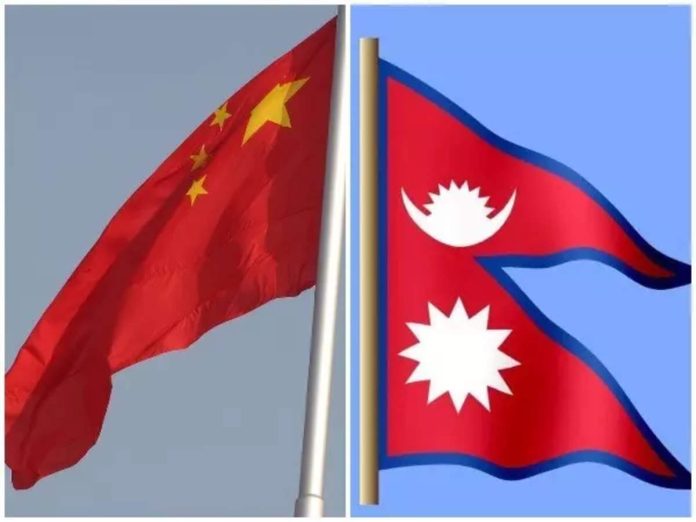Sunday marked the seventh year of the signing of the Belt and Road Initiative between Nepal and China yet the two sides are still struggling to finalise the implementation plan of the BRI that China proposed in early 2020.
Nepal and China signed a memorandum of understanding on the One Belt One Road, later known as BRI, a flagship initiative of Chinese President Xi Jinping, on May 12, 2017, subject to renewal every three years.
Still, there is a divergence of views on whether Nepal needs a dedicated BRI implementation plan to execute the projects under the Chinese initiative, senior government leaders and officials told the Post. Hence there is no clarity over when and how the implementation plan will be signed.
The draft titled “Implementation Plan on Jointly Building the Belt and Road Initiative between the Government of the People’s Republic of China and the Government of Nepal” is currently under the purview of the National Planning Commission for its redrafting/processing.
There was a general understanding between Nepal and China to sign the BRI implementation plan during the China visit of Prime Minister Pushpa Kamal Dahal in September last year as well as during the visit of Deputy Prime Minister and Minister for Foreign Affairs, Narayan Kaji Shrestha, in March this year. But there was little progress on both the visits and the signing was indefinitely postponed.
The draft of the BRI implementation plan is not ready yet, DPM Shrestha said. It is said to be in the final stage of completion. Shrestha says he tried to push the plan in his interactions with the Chinese side but there has been no progress.
One senior government official told the Post that the elections in India are the primary reason the plan has not made headway in China.
No sensitive decision that may hurt relations with India and China will be taken around election time, said an official at the prime minister’s office who is privy to the issue.
Shrestha said that projects under the BRI will be selected only after the plan’s signing.
“It is our position that we will select a new set of projects only after signing the BRI implementation plan,” Shrestha told the Post.
Asked about the nine projects selected during the tenure of KP Sharma Oli as the prime minister in 2019-20, Shrestha said they now have only referential value.
The text of the BRI implementation plan, which Nepal first received in early 2020 after Chinese President Xi Jinping’s Nepal visit, is a comprehensive document that outlines nine clusters: economic cooperation, agriculture, education, connectivity, trade, investment, tourism, culture, and people-to-people cooperation.
It said that the two sides would identify projects, discuss the investment modality and the way to execute it. After several rounds of exchanging text and comments, the Chinese side in October 2021 sent their draft to the Sher Bahadur Deuba government.
After Deuba became the prime minister, China’s State Councilor and Foreign Minister Wang Yi came to Nepal on an official visit. He then shared that Beijing has reservations over the financing modality of the projects to be undertaken under the BRI; Nepal had made it clear that it cannot afford loans with over 1 percent interest to implement the projects, and the country prioritised grants and concessional loans.
“The country’s economic situation has not improved. We are not in a position to take loans from anywhere including China as they would increase pressure on the weak Nepali economy,” said an official at the Prime Minister’s Office.
Amid the delays, China last year started the “Silkroad Roadster” in Nepal, focusing on some small-scale projects.
Nepal gave continuity to its old position when Prime Minister Dahal visited China in September-October last year.
“When the issue of BRI was discussed in Beijing during the prime minister’s trip, we told the Chinese authorities that we will sign the implementation plan at an ‘appropriate’ time,” former foreign minister NP Saud, a Nepali Congress leader, said. “We also conveyed to the Chinese officials and leaders that our preference is grant, not loan.”
The Congress and other political parties have called for a national consensus on vital issues like the BRI or any other development or economic vehicle with far-reaching consequences for the country.
Apart from the investment modality, Nepal also has reservations over a clause of the BRI implementation plan dealing with security concerns.
A former minister familiar with the plan expresses reservations over the text handed over by the Chinese, which Nepal wants to amend before signing or avoid.
The document’s sub-section 12 titled ‘Other Areas’ under section 3 named ‘Cooperation Priorities’ mentions that “the two sides will strengthen legal cooperation and actively carry out diverse legal exchanges and capacity building in order to facilitate B&R [belt and road] cooperation”.
It also says “the two sides will implement relevant agreements on law enforcement cooperation and strengthen security cooperation through joint training, information exchange, and capacity building, including for disaster management”.
Beijing accords the BRI top foreign policy priority. In every high-level visit and meeting between Nepal and China, the initiative gets traction.
Although there is no clear provision on whether the two sides should renew the agreement by exchanging correspondence, officials at the finance ministry said that would be the diplomatically correct way to go about it.
There are concerns over the BRI’s stalled momentum in Nepal. The initiative’s stated focus is connectivity, trade, development strategies, and policy dialogues for cooperation in the fields of economy, environment, technology and culture.
The agreement also aims to facilitate transit transport, logistics, transport network security and related infrastructure development through joint study and promote cross-border projects including railway, road, civil aviation, power grid, information and communication. The MoU also states that the two sides would conclude the joint feasibility study of China-Nepal Free Trade Agreement shortly and, if viable, start negotiations on a Free Trade Agreement to open up more markets and expand bilateral trade.
Other stated areas of agreed cooperation are establishing cross-border economic cooperation zones at the existing ports, and improving the investment landscape with a view to developing mega projects in the areas of power generation, water conservation, road, railway line, cross-border transmission line, information and communication technology and infrastructure, besides customs and quarantine.
Nepal also had a shaky position on the BRI in the past. After signing the deal in 2017, the government formed two committees headed by the foreign and finance secretaries to negotiate with China on the projects selected under the initiative. The finance secretary was tasked with project selection.
As per the Cabinet’s mandate, the finance secretary-led committee picked 35 projects to be funded under the BRI. Then-prime minister KP Sharma Oli read out this list during his meeting with Chinese counterpart Li Keqiang. Later, the Chinese side urged Kathmandu to cut the number of projects to a single digit, whereupon the list was pared down to nine projects.
A former finance ministry official who was involved in several negotiations with the Chinese side said most of the nine projects were related to connectivity and infrastructure. In 2019, during the second BRI Conference in China, its outcome document listed Trans-Himalayan Multi-Dimensional Connectivity Network under the BRI. (Former President Bidya Devi Bhandari had attended the conference.) Then, when Chinese President Xi visited Kathmandu in October 2019, the two sides agreed to enhance cooperation under the BRI.
They agreed “to intensify implementation of the Memorandum of Understanding on Cooperation under the Belt and Road Initiative to enhance connectivity, encompassing such vital components as ports, roads, railways, aviation and communications within the overarching framework of the Trans-Himalayan Multi-Dimensional Connectivity Network with a view to significantly contributing to Nepal’s development agenda of graduating from a Least Developed Country,” according to a joint statement issued after Xi’s visit to Kathmandu.
The Chinese side was keen to carry out the feasibility study of Kerung-Kathmandu railway under the BRI, the former finance ministry official said. “But we have shifting priorities on selecting and negotiating other projects.”
The feasibility study of the Kerung-Kathmandu railway has already begun with a Chinese grant and it is expected to conclude by 2026 June, said Rohit Kumar Bisural, director general at Department of Railways.
“As per our agreement, the feasibility study of the cross border railway should be completed by 2026 June. There are various studies on the ground. Nepali engineers and technical staff are not directly involved but they are supporting the Chinese technicians as required. There are no glitches. Once the study is complete, we will jointly write a report,” said Bisural.
A joint secretary at the Ministry of Foreign Affairs told the Post that no tangible progress has been made in the past seven years in implementing the BRI plan and no agreement is likely anytime soon either.
“This calls for consensus among the political parties as it is not just a matter of the government or one party,” said the joint-secretary. “The BRI is unlikely to move forward in Nepal anytime soon because there is no discussion, consultation and consensus among the major parties.”
Mahendra Bahadur Pandey, former foreign minister and Nepal’s ex-ambassador to China, said many leaders and officials have blamed high-interest loans for not taking the BRI forward but that is not the reason.
“We do not complete projects on time. If we did, we could easily pay back the loan and interest to China and other lending countries. Our leaders also fear the reaction of other countries [to accepting any kind of Chinese help],” said Pandey.
“We have ‘fear psychosis’ while taking economic support,” he said. “Nepalis are scared that India, China or the United States will be angry if the country takes support from any one of them.”
“We have to accept foreign support by taking neighbours and major powers into confidence,” Pandey said.









































